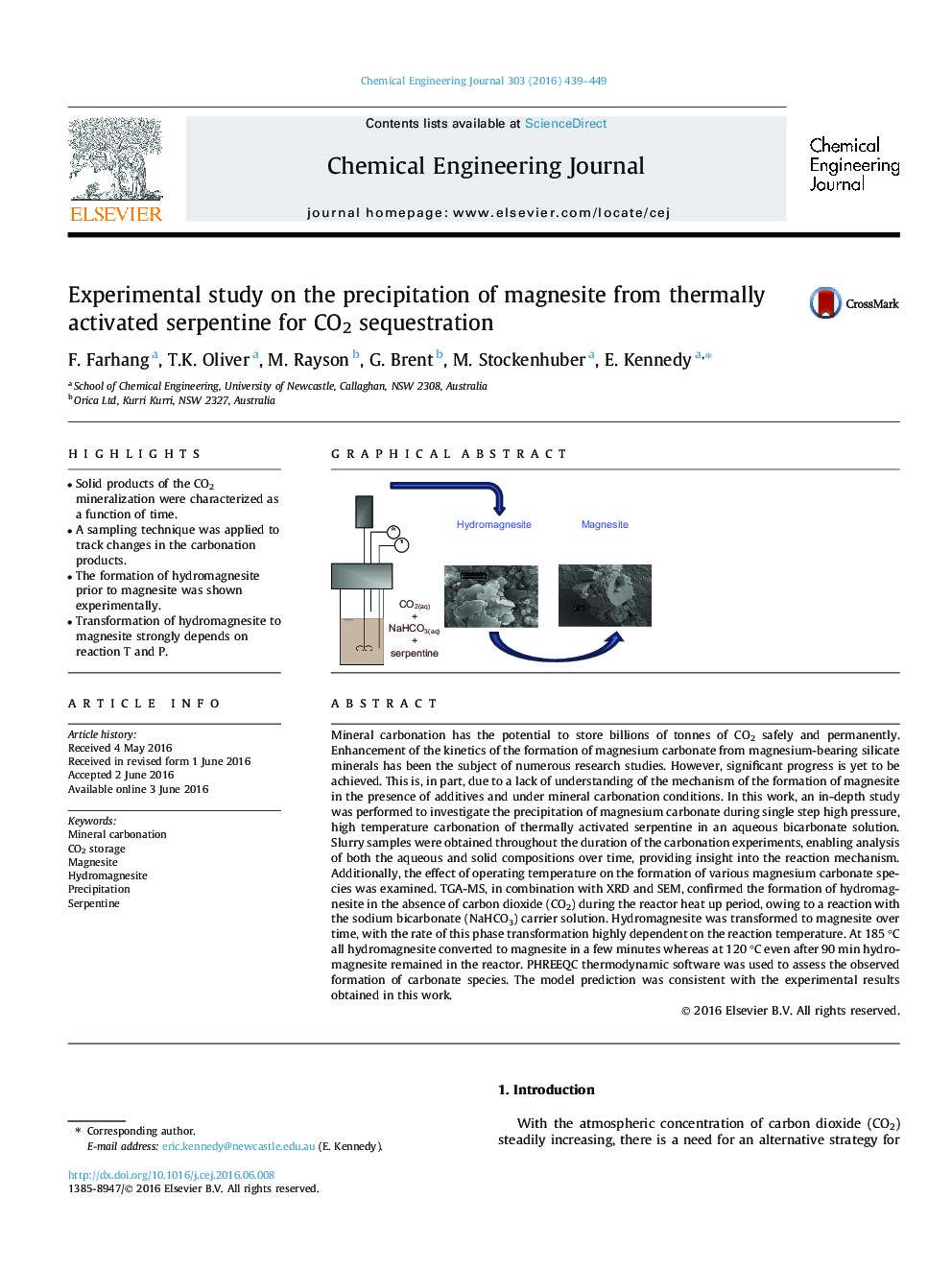| کد مقاله | کد نشریه | سال انتشار | مقاله انگلیسی | نسخه تمام متن |
|---|---|---|---|---|
| 145483 | 456341 | 2016 | 11 صفحه PDF | دانلود رایگان |

• Solid products of the CO2 mineralization were characterized as a function of time.
• A sampling technique was applied to track changes in the carbonation products.
• The formation of hydromagnesite prior to magnesite was shown experimentally.
• Transformation of hydromagnesite to magnesite strongly depends on reaction T and P.
Mineral carbonation has the potential to store billions of tonnes of CO2 safely and permanently. Enhancement of the kinetics of the formation of magnesium carbonate from magnesium-bearing silicate minerals has been the subject of numerous research studies. However, significant progress is yet to be achieved. This is, in part, due to a lack of understanding of the mechanism of the formation of magnesite in the presence of additives and under mineral carbonation conditions. In this work, an in-depth study was performed to investigate the precipitation of magnesium carbonate during single step high pressure, high temperature carbonation of thermally activated serpentine in an aqueous bicarbonate solution. Slurry samples were obtained throughout the duration of the carbonation experiments, enabling analysis of both the aqueous and solid compositions over time, providing insight into the reaction mechanism. Additionally, the effect of operating temperature on the formation of various magnesium carbonate species was examined. TGA-MS, in combination with XRD and SEM, confirmed the formation of hydromagnesite in the absence of carbon dioxide (CO2) during the reactor heat up period, owing to a reaction with the sodium bicarbonate (NaHCO3) carrier solution. Hydromagnesite was transformed to magnesite over time, with the rate of this phase transformation highly dependent on the reaction temperature. At 185 °C all hydromagnesite converted to magnesite in a few minutes whereas at 120 °C even after 90 min hydromagnesite remained in the reactor. PHREEQC thermodynamic software was used to assess the observed formation of carbonate species. The model prediction was consistent with the experimental results obtained in this work.
Figure optionsDownload as PowerPoint slide
Journal: Chemical Engineering Journal - Volume 303, 1 November 2016, Pages 439–449